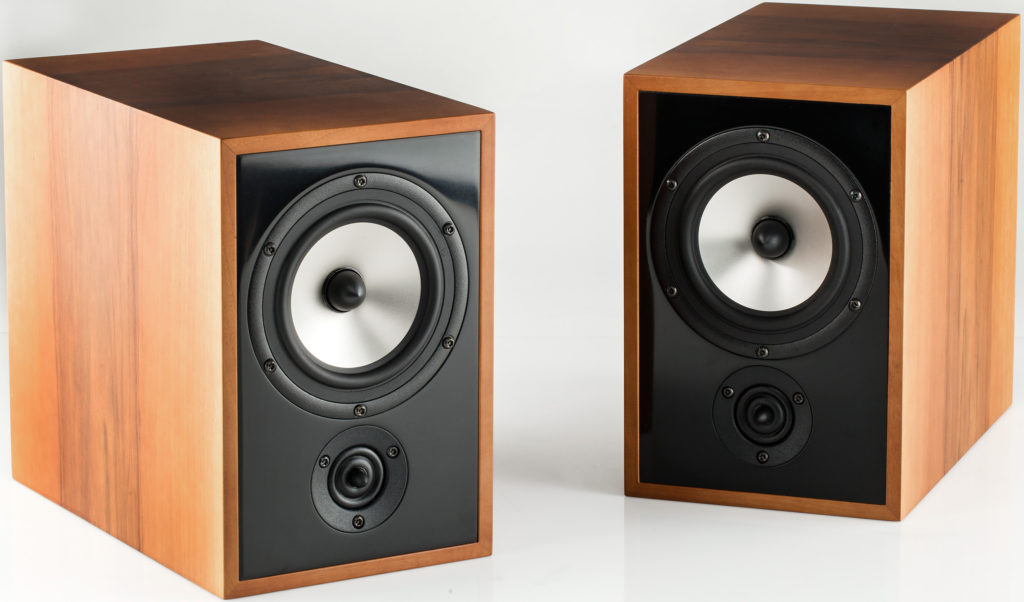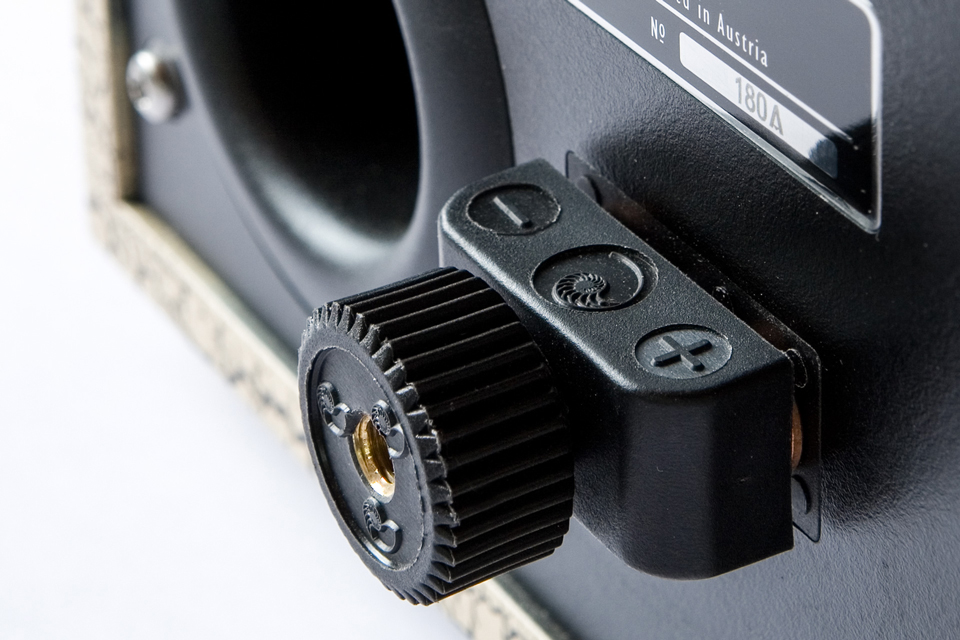Trenner & Friedl was started by two friends, Andreas Friedl and Peter Trenner, in the mid-1990s in Graz, Austria. If you spend some time reading about them on the Internet, you will discover that their goal is a little different from most high-end companies. In a review on TNT-Audio, Andreas Friedl says, “One of our main goals is to create classics; it is very important to be surrounded by things which have a long lifetime!” Thus instead of releasing new products year after year, they build just a few models and improve them only when they feel they can make a significant difference.
I have heard several Trenner & Friedl speakers at audio shows and at each show I have been impressed with the naturalness of the sound. The speaker in for review is their smallest and is called ART; it is named for the great saxophone player Art Pepper. The ART is on the small side of mini-monitors at 10.5 inches high by 7 inches wide and 12 inches deep. The fit & finish is very nice but in no way flashy. Trenner and Friedl say on their website that their objective is the same for all their speakers: to deliver an involving musical listening experience.
The cabinets fall into the dead, stiff school of speaker cabinet design. They feature a multi-layered body with a sandwich front of rigid, hand polished Corian©. The ART uses Cardas internal wire and the crossover is built from parts made by the German company Mundorf. The five-inch aluminum cone with its phase plug is mounted above the 1-inch ring radiator tweeter, which uses a neodymium magnet that is encapsulated in the rear chamber. This makes for a rather different looking mini-monitor in a rather pedestrian, though well-built cabinet. I mounted the speakers with Blu Tack to the top of a pair of 28-inch, sand-filled metal stands. The stands were then spiked to the carpet.
The Review System
The system I used for this review consisted of the AMG V12 table and Turbo tonearm sitting on the HRS stand made for the AMG table. The cartridge was the DS Audio Master1 with the DS 1 phono preamp. Standing in for a line stage was the Emia Remote Autoformer, which fed a Pass Labs XA30.8 power amplifier. All equipment except the speakers was set on a doublewide Box Furniture rack and everything was plugged into the HB Cables PowerSlave Marble. The power cords were High Fidelity Cables CT-1 Ultimate Reference Rhodium Plus. All of the interconnects and speaker cables were High Fidelity Cables CT-1 Ultimate Reference.
I tried setting the ARTs close to the rear wall, but they sounded overly warm and the imaging seemed kind of blurred. So I moved them out for nearfield listening. By moving them so that they were only about six feet apart, I was able to get the lower midrange and upper bass to sound better than I would have expected. If I separated them any further the bass became too thin. So I ended up with the front of the cabinets 66 inches from the wall behind the speakers and about nine feet from the listening chair. They worked best with just a little toe-in. The only problem I had with set up was that I don’t care for the speaker wire terminals they use. You can’t use banana plugs or very large spades, just thought you should know.
Listening
Let’s start with a few of the questions that we all have about really small speakers. For example, I love the sound of the Audience 1+1 V2. As good as they are, and they are incredibly good, they can’t play quite as loud as a big floorstander. The ART, however, sounds big and plays loud, something you’d never expect from such diminutive cabinets. The overall tonal balance is slightly warm but very natural in my room. I would say the tonal balance reminded me of the Audio Note J speakers, though the Js do go lower.
It did not take much listening to hear that these speakers are fast. Transient speed is one of the ART’s strongest attributes. This sense of speed comes from excellent micro-dynamics, which allows them to deal deftly with changes of pace and rhythm. The ART also have better overall dynamics than I would expect from drivers this small in such a dead cabinet. This combination of speed and dynamics give the ART a more powerful sound than I had expected.
The ART are able to create a huge soundstage and they really pull off that disappearing-from-the-room trick. Few bigger speakers can do this to anywhere near the same extent. So if soundstaging is important to you, this speaker should really please you, especially in a small room. They are also imaging and detail champs. Even though the overall sound of the speaker is slightly warm, I found the leading edge of the detail in the upper midrange is slightly analytical sounding.
If you have read my reviews for long you know how important it is to me how a system reproduces voices. The ART played voices in a way that sounded clear and detailed. They reproduce male and female vocals equally well, which isn’t a given with multi-driver speakers. They do have somewhat of a monitor “feel” in that you can hear every detail of the voice or voices. The ART is very transparent, with good musical flow from note to note. The sound is direct and alive.
Bass performance is really room dependent. Trenner & Friedl states that the ART’s bass is -6dB at 44Hz. I don’t know where they are 3dB down, but in my main listening room it has to be somewhere above 50Hz. When I moved the speakers to my office, a room that is 11’ by 10’, the ARTs sounded like they went below 50Hz with authority. Truth is these speakers really came to life in that smaller room. So I set up some stands and listened to them in my office. I have to say that, in a small room, they are one of the better speakers I have heard.
Conclusion
There is a lot of competition at this price point, the new Elac Adante floor standers being one of them, for instance, but not everyone wants a floor-standing speaker or has a room that can handle that much bass. I, therefore, see many situations where the Trenner & Friedl ART bookshelf speakers would be a wonderfully musical speaker choice.
Copy editor: Dan Rubin
- (Page 1 of 1)


Maybe at half the price. Very expensive little buggers. Off course the know how and tech costs a lot for a small company. I understand that. Still.
Listen To it and u will Love them…
Amazing. Worth every cent…
Did I like these speakers? You bet! More, much more than I expected, considering my idiosyncrasy for compact bookshelf loudspeakers. In few words…I could happily live with them. Are they expensive? Yes, definitely. Too expensive? Maybe. But this seems to be the price to pay for such a good, natural, clean and effortless sound. Hard to admit but…these babies might change your mind about minimonitors. Even more, they can turn your world upside-down, like their inverted drivers design!